
We’re all encouraged to keep our hands off of our phones while driving, but as our media shifts from the radio to streaming apps, that becomes just a bit harder. Over the past few weeks, I’ve been using Spotify Car Thing to control music on my drives, and while it’s a device full of great ideas, I can’t help but feel it’s somewhat redundant at this point.
What can Spotify Car Thing do?
With a non-descript name such as “Car Thing,” you’d be forgiven if you can’t fully imagine what this device is capable of. But, in short, it’s a small display designed and optimized for accessing your Spotify library from the road in a way that (mostly) keeps your eyes on the road.
Spotify Car Thing has a touchscreen display with five buttons along the top, a scroll wheel that covers a small portion of the display, and a back button below that. The device is designed solely to control Spotify playback, and nothing else. When music is playing, you’ll have a fullscreen display that includes the song title, artist, and album art, as well as play/pause, skip/back, and shuffle and “like” buttons. The “homescreen” though, acts a lot like the “home” tab in the Spotify mobile app, but with a bit more of a focus on your library of content. You can see your most recent playlists or albums, radio stations, as well as some recommended content, too. There are further tabs to dive into recommendations and your library in particular as well.
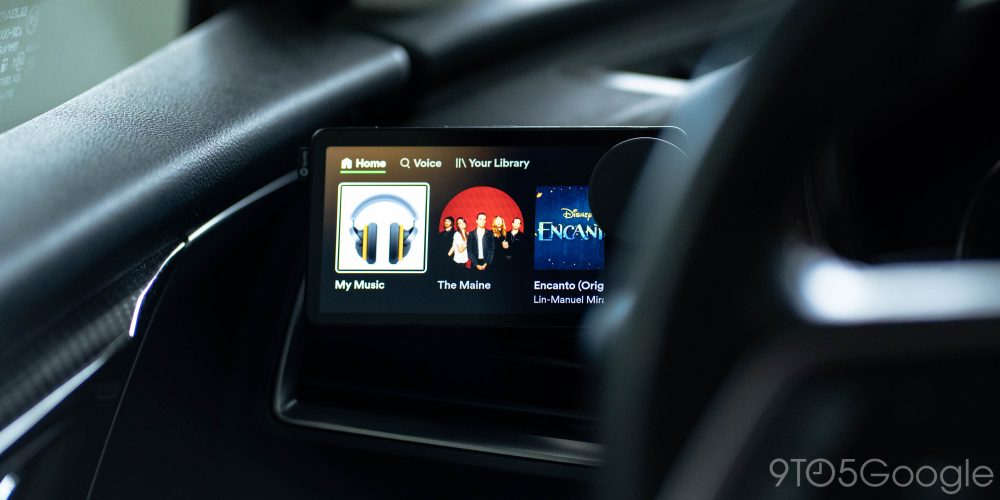
Navigating Car Thing with those few buttons and particularly the scroll wheel was a pleasure, and it’s a very intuitive UX. There’s a short tutorial at setup that goes over how to use the back button and the scroll wheel, but it’s easy to figure out even without an explainer. The scroll wheel acts as volume control (for your phone volume, not the car’s) when on the “Now Playing” screen, and as a way to sift through albums or tracks when not on that screen. The UI is very quick and responsive, with no real lag or jitter throughout, and the touchscreen felt pretty much on par with a modern smartphone.
It was also great to see that Car Thing can pretty easily handle connecting to multiple devices, something that’s super convenient if you share a vehicle with your spouse, a family member, or a friend.
Bluetooth connections were rock solid and super fast. Car Thing usually booted up and paired to my phone within a few seconds, often before my car’s own infotainment system was fully ready to go. Of course, I still had to wait to start playback until the car was ready to go, though, as Car Thing only controls playback; it doesn’t actually pass the audio along to your car.
Once up and running, I’ve never had Car Thing disconnect from my Pixel 6 Pro or Galaxy Z Fold 3 mid-trip. As far as initial pairing goes, the process is easy enough, but I did find that I had to manually pick Car Thing from the Bluetooth menu rather than from a pop-up within the Spotify app.
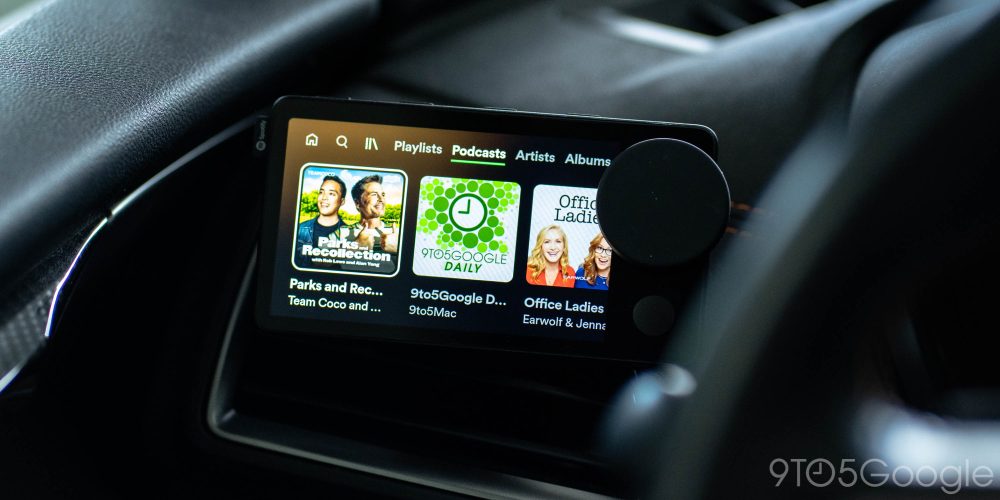
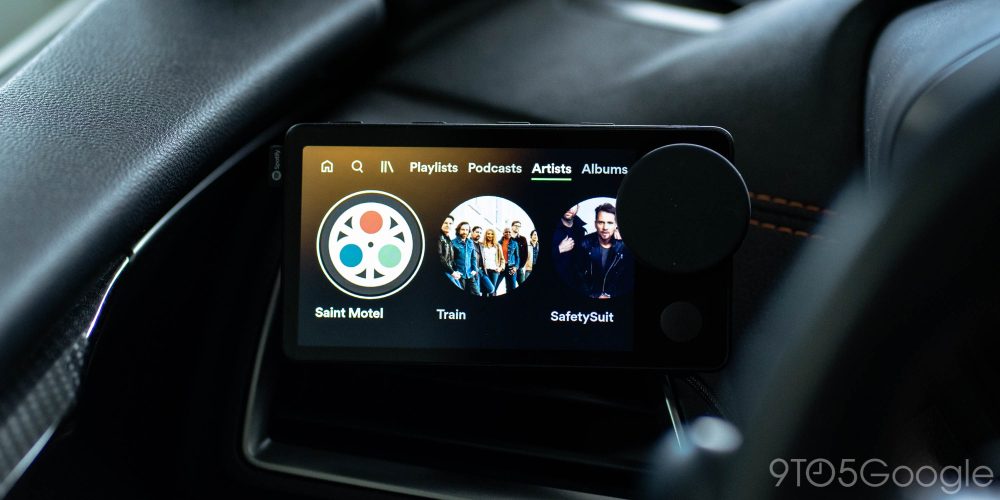
Mounting Spotify Car Thing is a breeze, too. The device itself has a pretty strong magnet on the back, which connects to an assortment of included mounting options. There’s a vent mount that has a clever design that ensures you can always get the correct angle – this is the option I stuck with, and it works brilliantly. Other mounting options include one for a CD slot, which was stable in my brief testing, and finally an adhesive mount that you could stick to a reasonably flat portion of your dashboard or the windshield.
In my testing, the magnetic mount never budged even on bumpy roads, so there was no concern at all around the device falling down while driving or interacting with it. A power adapter is also included in the box along with a USB-A to USB-C cable that is decently long. If you have a power source under the infotainment area, the cable is likely long enough to support mounting Car Thing just about anywhere.


Another key feature of Car Thing is support for “Hey Spotify” voice commands. Like in the mobile app, this media-focused voice assistant works to control playback, move to other songs, and more. I had been hoping that this focus would allow Car Thing to do more things with voice than Google Assistant is currently capable of. For instance, one thing I’d love to be able to do in the car by voice is say “Hey Spotify, open this full album” when a specific song is playing. It’s something Assistant can’t do and, sadly, Spotify can’t, either. The basics work fine, but having a voice assistant that can’t do anything additional beyond what, say, an always-listening Google Assistant on your phone could do is a bit frustrating. It is nice, though, that Car Thing moves the mics away from your phone for better accuracy. I was never disappointed with Car Thing’s ability to hear my commands.
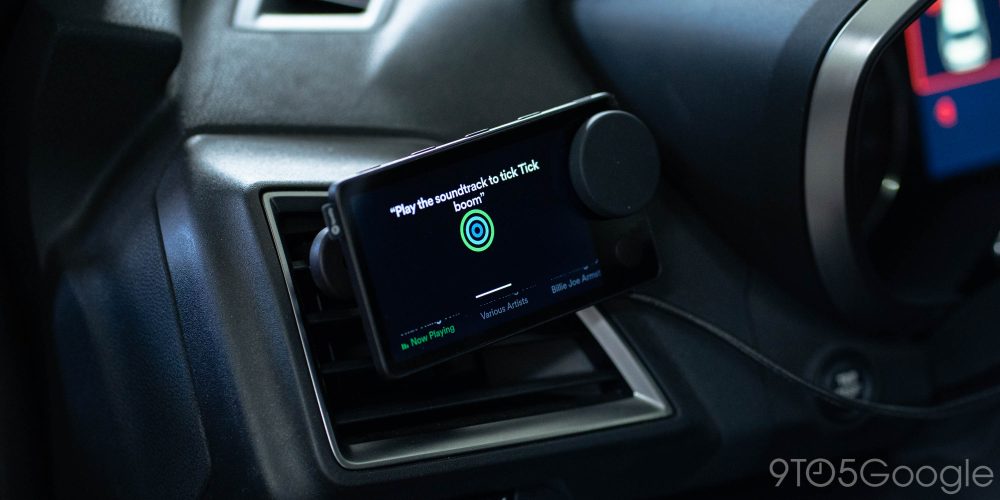
Does Spotify Car Thing work with Android Auto?
To my surprise, Car Thing doesn’t try to step on the toes of Android Auto at all. The two play together incredibly nicely, to the point where Car Thing even recognizes when your phone is connected to Android Auto. Of course, it does that because Android Auto disables on-phone volume controls, effectively turning off Car Thing’s volume knob in the process.
While Spotify Car Thing does work with Android Auto also running, it’s not an experience I recommend. In my Subaru Crosstrek, finding a place where Car Thing actually made sense was awkward, and the experience feels entirely redundant.
Well, except for one thing.
Car Thing’s killer feature
The only reason I’m tempted to keep Car Thing installed in my vehicle is the product’s killer feature — playlist access.
The four buttons along the top of Car Thing can be custom-mapped to your favorite playlists, with a single tap starting playback. I quickly got accustomed to this feature, and it’s great for getting the music you want without taking your eyes off of the road or fiddling with software. Just click, and you’re good to go. The fifth button on the top goes into the Settings menu.

I wish there was some way to replicate this without a second screen in my car, though. I’d love a battery-powered version of Car Thing that lacks the screen and just has four buttons. A portable “Spotify Thing” could be useful beyond just the car too, in places like a camping trip, while working outside, or even in the shower.
Who should buy Spotify Car Thing?
Spotify Car Thing feels like a product that makes sense in a few certain scenarios, all of which are shrinking in commonality.
The biggest market for Car Thing is someone who has a vehicle without a display, but with a vehicle that does still have Bluetooth, or at least an adapter. Since Car Thing has no analog audio output, it puts itself in a weird niche. With a simple 3.5mm cable, this would be a much more useful product in far more cars, but alas, it doesn’t.
Another area I could see Car Thing being useful is for cars that do have an infotainment system, but one that lacks something like Android Auto or CarPlay. Car Thing has a far better user experience than virtually any car manufacturer’s software, and a built-in system will also certainly lack any integration with Spotify playlists or libraries — Spotify is even actively removing that functionality.
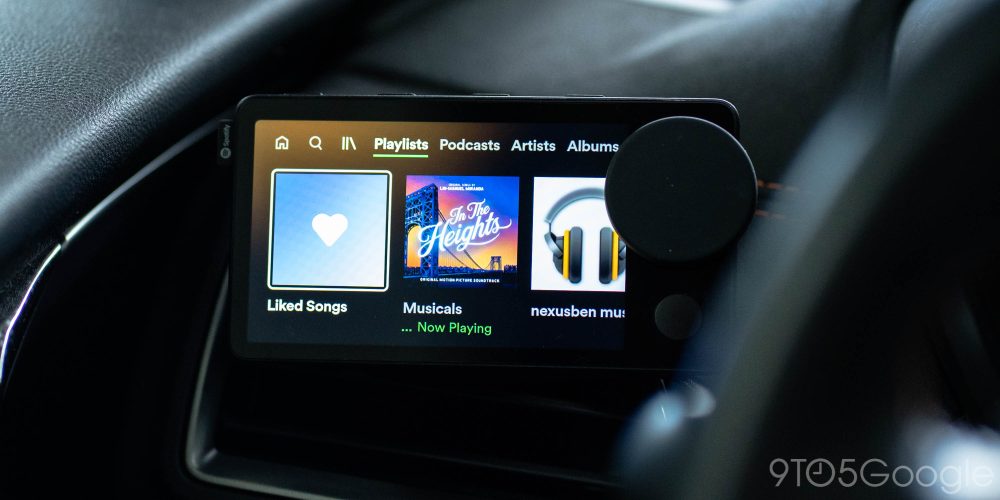
This is a product that feels late. Had this come out even a few years ago, it would have been a much more useful idea. But now, as Android Auto and CarPlay have become commonplace in new vehicles, and more used vehicles have the feature as well, it’s harder to find Car Thing’s niche.
All of that said, at $90, it’s a reasonably priced product if you do fit into that niche. It provides a great experience with attractive and well-built hardware for the most die-hard of Spotify users — and that’s a key distinction, since the product requires a Spotify Premium membership.
You can buy Spotify Car Thing here.
More on Spotify:
- Spotify letting customers ‘test drive’ overhauled Car Mode
- Google Play announces support for third-party ‘User Choice’ app billing, starting with Spotify
- Spotify tests swipe-to-queue gesture on Android a year after saying the feature isn’t ‘on our radar’
Author: Ben Schoon
Source: 9TO5Google



